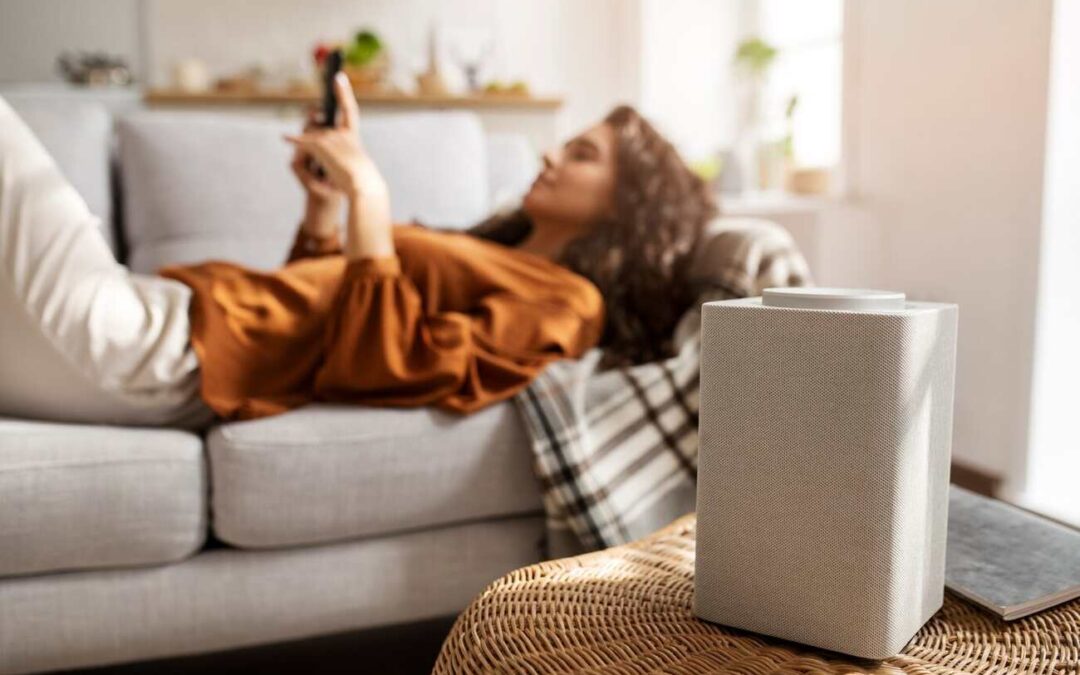When you buy a new home or renovate your existing residence, one of your top priorities should be aiming for greater energy efficiency. Things such as installing new windows, resealing drafty doors, or re-insulating parts of the house can keep cool air in during the summertime and warm air in during the winter. Once you’ve sealed your house against heat transfer, though, you need to pay some mind to the unwanted things you might be trapping in your home, such as dust, dirt, pet dander, and other impurities. Using a HEPA air purifier can help—especially in the winter months, when options like having windows or screen doors open are not available. The question is, do you need an air purifier to maintain your indoor air quality? Or is an air purifier just a superfluous expense that will never yield much actual benefit?

What Is a HEPA Air Purifier?
The first thing to understand is that not all air purifiers are created equal. As with any product, you will need to shop around and do your homework before you buy an air purifier. Otherwise, you could end up with a product that does little more than generate white noise.
If you are going to buy an air purifier, you will want to spring for a HEPA model. “HEPA” stands for high-efficiency particulate air.” An air purifier with a HEPA filter, therefore, will be adept at clearing very fine particles from the air. Since many of the particles that end up affecting indoor air quality are microscopic and ultrafine, having a filter that can collect these particles is a must if you are going to bother buying an air purifier at all.
While HEPA air filters are generally effective at removing small particles from the air, they have their drawbacks. The biggest con is that HEPA filters are expensive. You pay for the quality difference, which means that annual filter replacements can hit the wallet pretty hard. There are some filter or air purifier manufacturers that have taken steps to make HEPA filters more accessible to general buyers. Some HEPA filters can be washed, cleaned, and reused, while others come with a “pre-filter” apparatus that stops bigger debris from ever reaching the HEPA filter. The result of the latter system design is that the HEPA filter does what it is designed to do—filter out ultrafine particles—and doesn’t get clogged up by larger particles.
The Other Drawbacks of Air Purifiers
Even beyond the annual cost of replacing HEPA air filters, though, owning and running an air purifier daily can be a costly business. The upfront costs associated with air purifiers really run the range, landing anywhere between $200 and $1,000 for a high-quality model. You also need to consider the energy usage of these models. In general, an air purifier isn’t going to cost more than about $100 a year to operate. Those costs add up over time, though, and it can be frustrating to spend the money and use the energy when you aren’t entirely sure how much of a difference your purifier is even making. To ensure the highest levels of energy efficiency, make sure to go for an Energy Star-rated model if you do decide to purchase a HEPA purifier.
The biggest drawback of air purifiers, though, has little to do with energy use or filter cost. Indeed, some purifiers—especially those that use ionizer technology or electrostatic precipitator technology—produce trace amounts of ozone during operation. Ozone can cause a range of different respiratory health problems, including irritation of the throat, coughing, and shortness of breath. It can also exacerbate conditions like asthma. Keeping ozone out of your home, in other words, is essential for the health of your family, your pets, and anyone else who may spend significant amounts of time in your house. Again, researching air purifiers before you buy can help you avoid these risks.
Keeping Your Air Pure without an Air Purifier
The good news is that you don’t necessarily need an air purifier to maintain high levels of indoor air quality in your house. Here are a few other steps you can take to ensure fresh, healthy air at home:
- Weekly vacuuming, dusting, and sweeping—especially if you have a cat or dog
- Changing your furnace filter every six months
- Having your air ducts cleaned by an HVAC professional
- Running the fan on your air conditioner semi-regularly
- Opening your windows in the summer to let in fresh air
- Not smoking or allow smoking inside your home
- Not having fires in your indoor fireplace
These steps can do a lot to keep your air fresh and good for breathing. Certainly, using a HEPA air purifier can add to these processes and help remove existing pollutants from the air. If you do feel that you need an air purifier or some other type of air cleaning device to help eradicate particles from the air, call your local HVAC expert. They can advise you on strategies and tools for achieving superior indoor air quality.
Can Houseplants Improve Indoor Air Quality?
If you’re not quite sold on the idea of buying an air purifier, you might be wondering about more natural ways to freshen up your home’s air. Enter: houseplants. While they’re not a full-on replacement for HEPA air purifiers, some plants can help remove certain toxins from the air. Think peace lilies, spider plants, snake plants, and English ivy.
NASA even did a study back in the day that showed certain indoor plants could reduce levels of pollutants like benzene, formaldehyde, and trichloroethylene. While you’d need quite a jungle to make a major impact, a few strategically placed plants can support overall indoor air freshness—and hey, they look great too.
HEPA Filters vs. Activated Carbon Filters: What’s the Difference?
You’ve heard a lot about HEPA filters—but what about activated carbon filters? These are often used alongside HEPA filters, and they’re key when it comes to tackling odors, gases, and volatile organic compounds (VOCs). Think smells from cooking, smoke, or off-gassing from furniture or cleaning supplies.
Where HEPA shines with particles, carbon filters trap odors and gases. So if you’re concerned about both allergens and funky smells, look for a purifier that combines both filter types. It’s a powerhouse combo that covers more bases than HEPA alone.
The Role of Ventilation in Indoor Air Quality
Even the best HEPA air purifier can’t do everything. One of the most overlooked contributors to healthy indoor air is proper ventilation. A tightly sealed home is great for energy efficiency—but without good airflow, pollutants can build up fast.
If installing a whole-house ventilation system isn’t in the cards, consider exhaust fans in bathrooms and kitchens, cracking a window when weather allows, or even using energy recovery ventilators (ERVs). These systems bring in fresh air while preserving indoor temps, giving you the best of both worlds: comfort and clean air.
Can Air Purifiers Help With Viruses and Bacteria?
Here’s a timely question: Can a HEPA purifier help protect against viruses or bacteria? The answer? To a degree. HEPA filters can trap particles down to 0.3 microns in size, which includes many types of airborne bacteria and even some viruses attached to larger droplets.
However, for next-level air sanitization, some advanced air purifiers use UV-C light or PECO (photo electrochemical oxidation) technology, which can neutralize pathogens rather than just trapping them. These are more expensive, but for immune-compromised individuals or families with young children, it might be worth the extra investment.



